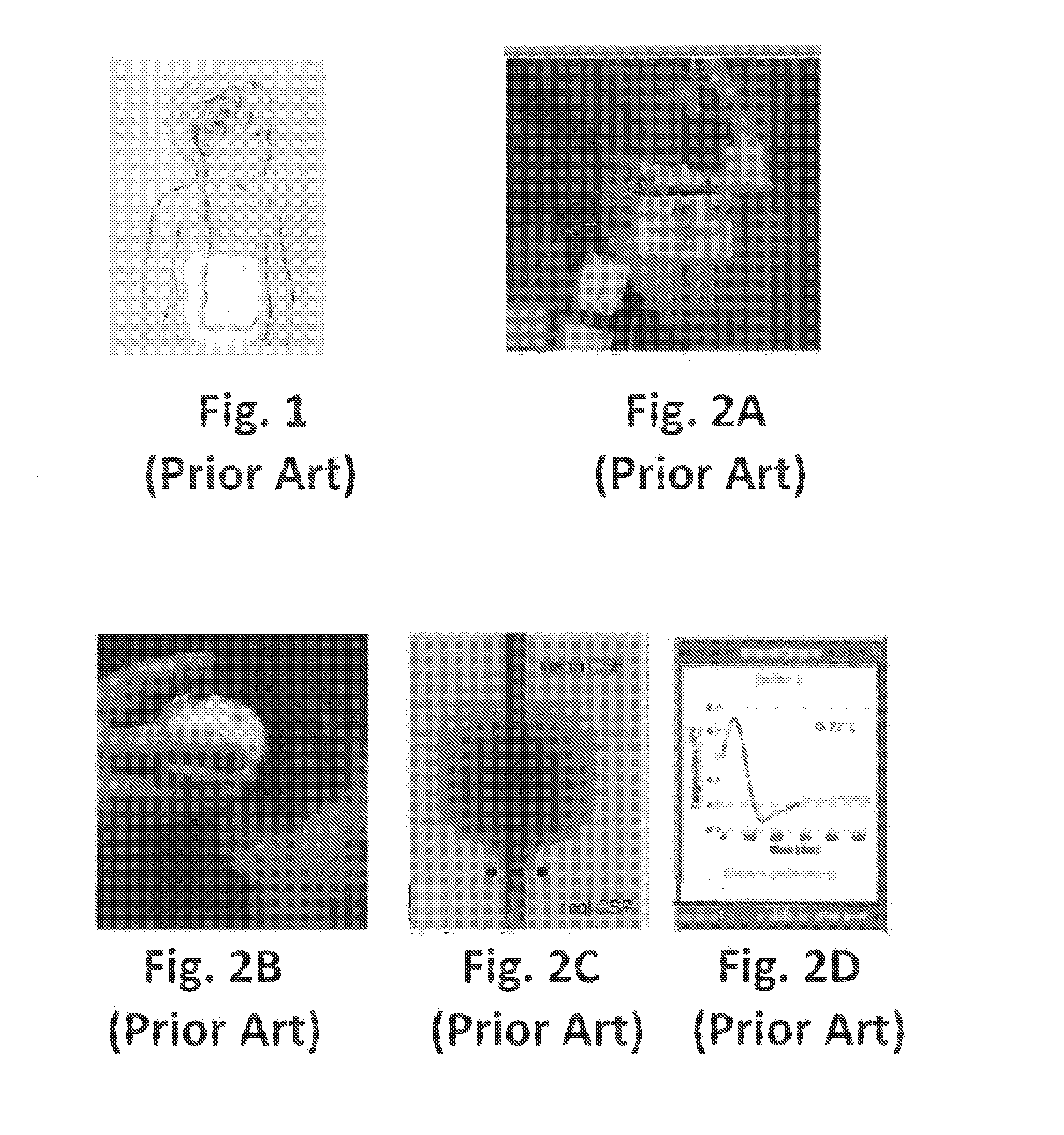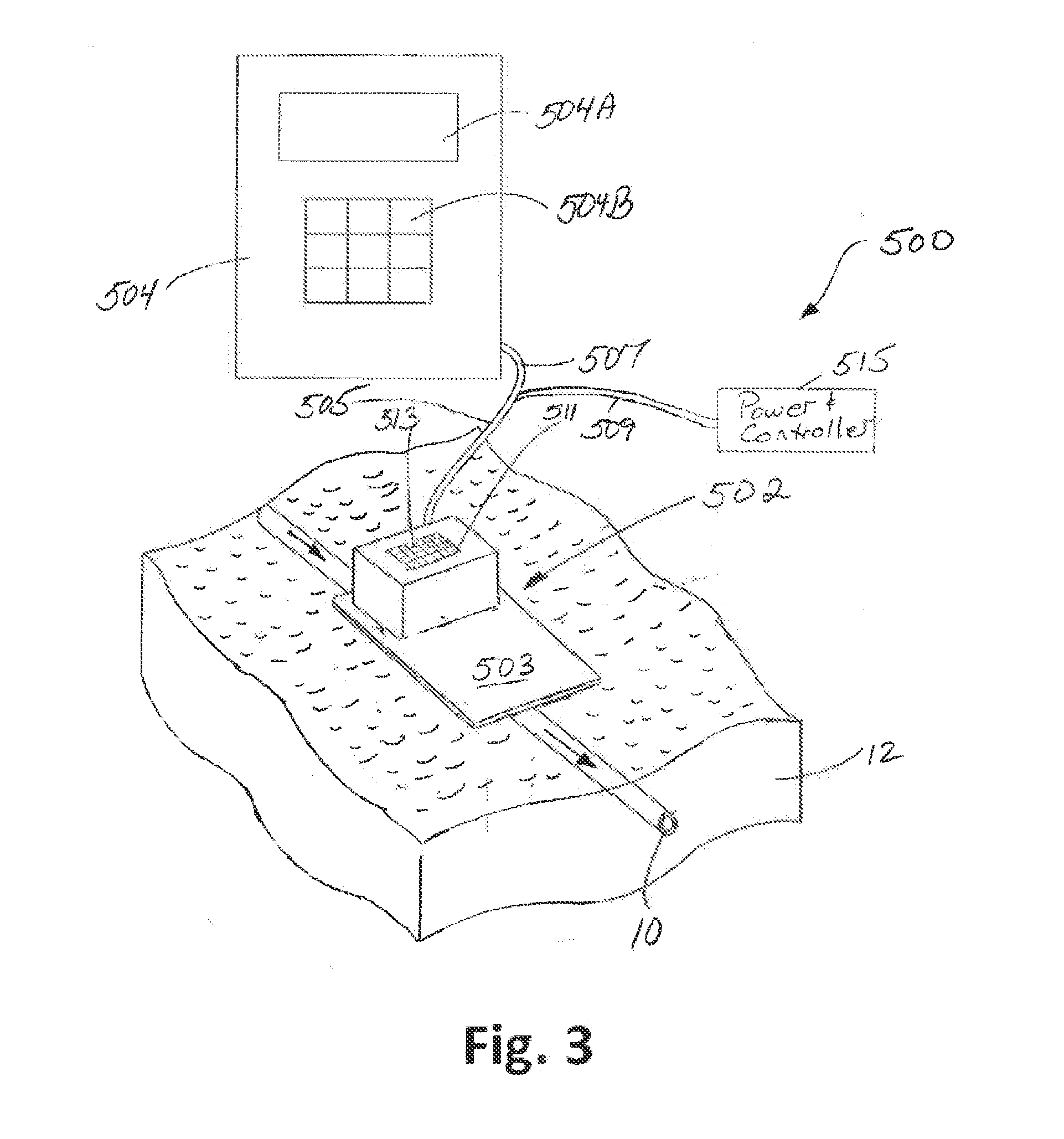Continuous real-time CSF flow monitor and method
a continuous real-time, csf technology, applied in medical science, intracranial pressure measurement, diagnostics, etc., can solve problems such as brain damage and death, shunt failure, and generate $2 billion in annual us healthcare costs
- Summary
- Abstract
- Description
- Claims
- Application Information
AI Technical Summary
Benefits of technology
Problems solved by technology
Method used
Image
Examples
Embodiment Construction
[0039]The present invention 500 is termed a “continuous real-time (CRT)” CSF flow monitor and method. This device provides improved care for hydrocephalus patients by providing a rapid and non-invasive method for monitoring changes in CSF flow in shunted patients. As a result, the present invention 500 directly responds to such demands for diagnostic tools for use in a hospital or outpatient settings that work in real-time to quantitatively determine shunt function.
[0040]As is discussed in detail later, a key aspect the present invention 500 uses non-invasive thermal dilution technology to monitor changes is CSF flow over extended periods of time, enabling neurosurgeons to assess in real-time the impact of changes—of valve setting, patient position, etc.,—on shunt flow. This cannot be accomplished in any way with current technologies and represents an important new tool for managing hydrocephalus. As will also be discussed later, a “Peltier sensor” of the present invention 500 repre...
PUM
 Login to View More
Login to View More Abstract
Description
Claims
Application Information
 Login to View More
Login to View More - R&D
- Intellectual Property
- Life Sciences
- Materials
- Tech Scout
- Unparalleled Data Quality
- Higher Quality Content
- 60% Fewer Hallucinations
Browse by: Latest US Patents, China's latest patents, Technical Efficacy Thesaurus, Application Domain, Technology Topic, Popular Technical Reports.
© 2025 PatSnap. All rights reserved.Legal|Privacy policy|Modern Slavery Act Transparency Statement|Sitemap|About US| Contact US: help@patsnap.com



